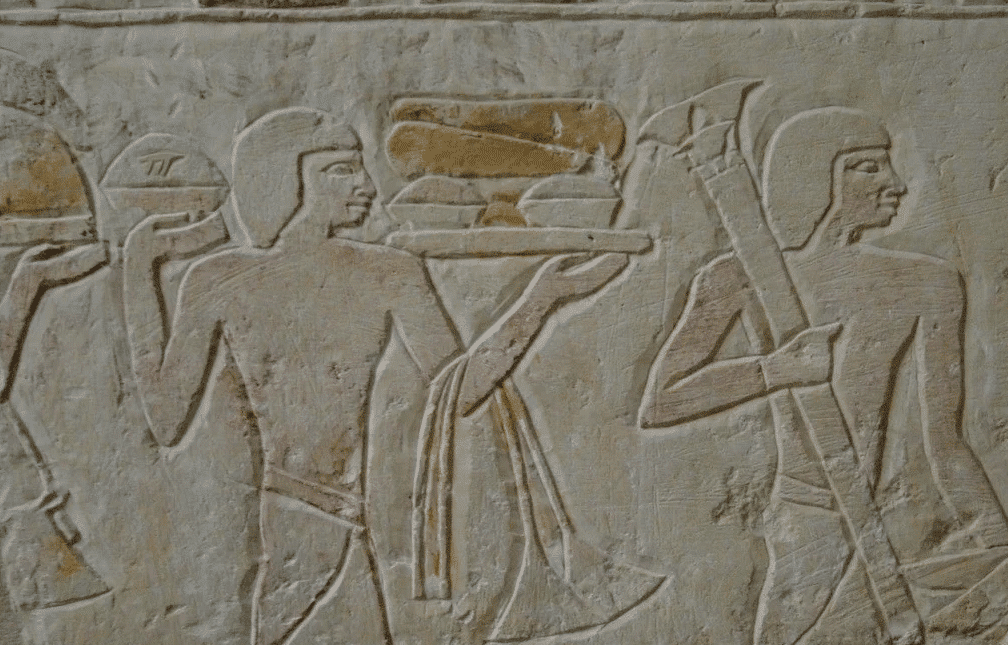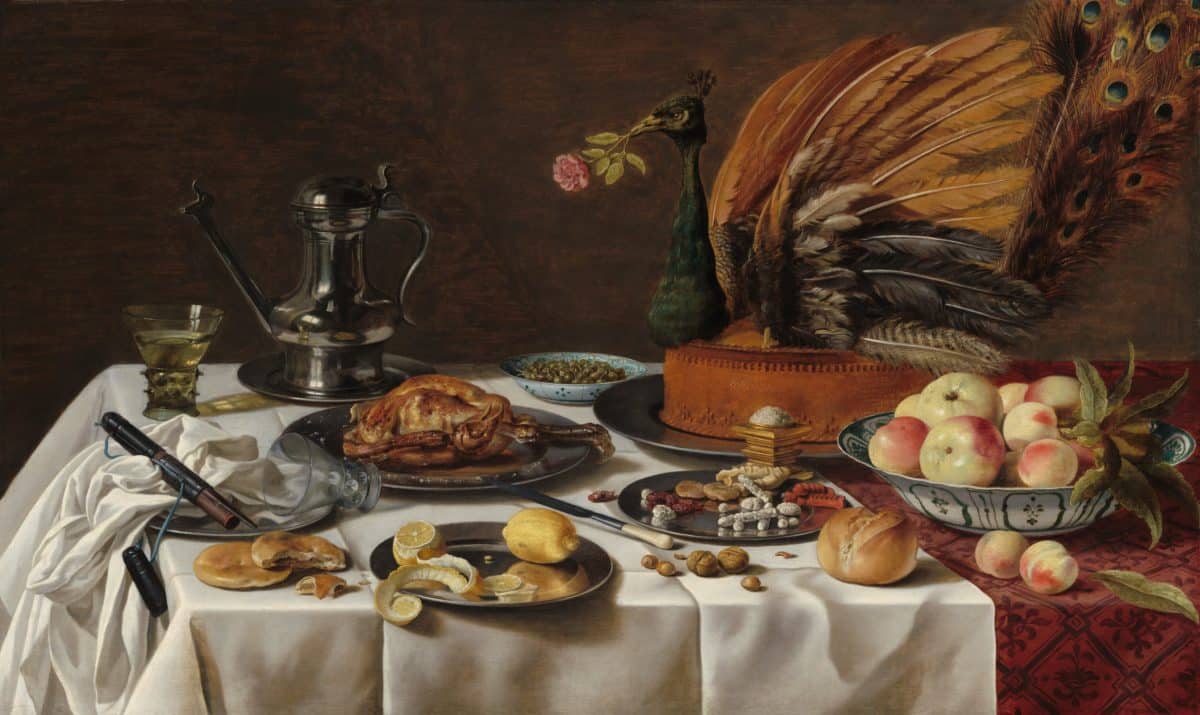Americans Celebrate “National Pie Day” on January 23.
Celebrate #NationalPieDay with the backstory and a recipe for a ‘pizza’ pie.
National Pie Day was started in the mid-1970s by Boulder, Colorado nuclear engineer, brewer and teacher Charlie Papazian after he declared his own birthday, January 23, to be National Pie Day. Since 1986, National Pie Day has been sponsored by the American Pie Council.
There are two types of pies that we love with a passion: fruit or meat pies in a crust, and pizza pies. Dean Martin (and countless gondoliers in the years since) made the “pizza pie” phrase famous in the song That’s Amore. But you might be wondering why we might even say the words pizza pie together at all considering we tend to think of pizza and pie as two very different things. What if I told you that at one point they weren’t?

The ancient Egyptians
first gave us the beginnings of pie, in a galette form with honey filling and a crust of oats, wheat, rye, or barley. These treats gave way to other types of pastries and just as we love sweets now, they were popular then, so much so that there are pictures of slaves carrying pies on the tomb walls of Pharaoh Ramesses II (1304 to 1237 B.C.E.) in the Valley of the Kings.
The ancient Romans
used pie-like crusts for cooking meats, such as that in Apicius 7.9.1 for pastry-wrapped ham. The Romans often would cook meats in crusts, but the crusts weren’t always meant for eating, but to make the meat more delectable. This was true for the next few centuries. Many medieval pies looked very much like the pies we know and love today but the crusts were thick and generally inedible, meant more for cooking meats over an open fire. That’s also where we get the term “pot pie” because the crusts had to be cut open to reach the meat inside. These types of pies were typically savory, with lamb, chicken, beef, goat or small birds.
Sing a song of sixpence
Pies were so popular in the Middle Ages and the Renaissance that they were often part of the entertainment. That’s right, the nursery rhyme of four and twenty blackbirds wasn’t just a nursery rhyme! In fact, Renaissance chef, Bartolomeo Scappi, took it to another level, describing a banquet with live birds flying out of pies and pastry castles! Birds baked in pies were quite common all the way through the Renaissance and into the Baroque eras.

Pumpkin Cheesecake Pie
Bartolomeo Scappi, in his 1570 cookbook The Opera di Bartolomeo Scappi, among over thousand recipes, includes dozens of pies, both sweet and savory. There are apple, peach and cherry pies, as well as all sorts of pies stuffed with meat or fish. One of my favorite Scappi recipes for pies is for a pumpkin cheesecake pie.
Celebrate National Pie Day with the overlap of PIE and PIZZA
Scappi’s cookbook is also where we start to see the first overlap of the idea of pie and pizza. He has several recipes for pizza, but none of them come close to that of a flat crust topped with cheese, sauce, and meats or vegetables. Instead, his pizzas were sweet. Instead, these “flaky pizzas” range from what we might think of as flaky pastries and donuts, to something that seems like it might be akin to what we know of as a Dutch Baby. There is one, however, that begins to make the use of cheese:
V.130 Get two pounds of fine flour and make up a dough with six ounces of Parmesan cheese that has been ground in a mortar, moistened with a fat broth and rosewater and strained; add in three ounces of sugar, six egg yolks, three ounces of breadcrumb soaked in a fat broth, half an ounce of cinnamon and half an ounce of cloves and nutmeg together. Knead the dough for an hour and make a thin sheet of it. Brush melted butter on it and make a twist of it with the sheet rolled in four layers lengthwise; brush it with melted butter that is not too hot. With that twist make several small cakes, fry them in butter or rendered fat and bake them in an oven in a tourte pan just as twists are done. Serve them hot with sugar over them.
As American as Apple Pie
Of course, fruit pies made their way across Europe and over to America, where, despite being around for centuries prior, settlers decided the apple pie was unique to them. America’s first cookbook, American Cookery by Amelia Simmons (1796), includes two recipes for apple pie.
The Evolution of Pizza Pie
Eventually these sweet pizzas gave way to what we know of as pizza, but not until much later on, in the 18th and 19th centuries. Red sauce definitely wasn’t a thing as the Italians didn’t use tomatoes–as part of the nightshade family, they were thought to be poisonous. Plus the juice from these fruits would run all over the pewter dishes of the wealthy, thereby leaching the lead from the plates and killing people. The peasant population ate off wood or clay dishes and didn’t have this problem, but the tomato’s reputation was cemented for a few centuries after they first arrived in America from early Spanish explorers. For a long while they were largely used as an ornamental plant, but when famine became widespread in Europe, peasants didn’t let a little rumor of poison deter them. Once they realized tomatoes wouldn’t kill them, they began eating them on flatbread, and then it likely wasn’t much more time before red sauce, cheese and meat toppings followed.
The first recipe for tomato sauce was in Antonio Latini’s cookbook The Modern Steward (1692-94), and it’s really more of what we know of as a salsa than a sauce you’d find on pizza. Over the next century, Neapolitans began adding tomatoes to flatbread and modern pizza was born.
Neapolitan Pizza?
But let’s go back to Bartolomeo Scappi and his version of “Neapolitan Pizza.” What I love is that he points out that the Neapolitans have been calling some sort of concoction “pizza” for much longer than many may have thought:
V1.142 To prepare a tourte with various ingredients, called pizza by Neapolitans. Get six ounces of shelled Milanese almonds, four ounces of shelled, soaked pine nuts, three ounces of fresh, pitted dates, three ounces of dried figs and three ounces of seeded muscatel raisins; grind all that up in a mortar. Into it add eight fresh raw egg yolks, six ounces of sugar, an ounce of ground cinnamon, an ounce and a half of crumbled musk-flavored Neapolitan mostaccioli and four ounces of rosewater. When everything is mixed together, get a tourte pan that is greased and lined with a sheet of royal pastry dough; into it put the filling, mixed with four ounces of fresh butter, letting it come up to no more than a finger in depth. Without it being covered, bake it in an oven. Serve it hot or cold, whichever you like. Into that pizza you can put anything that is seasoned.
This is certainly more a pie than a pizza! It’s really a fruit and nut pie, not that dissimilar from mincemeat, sans the meat. Seems the Neapolitans had many versions of “pizza” long before Queen Margherita had her first taste in 1889!
Pizza…Pie…that’s AMORE!
And what better way to celebrate #NationalPieDay than with a recipe that’s both a pizza and a pie? Here’s the recipe for Bartolomeo Scappi’s Neapolitan Pizza, modified for modern audiences. It’s absolutely delicious, and the recipe easily stands up after five hundred years! ![]()